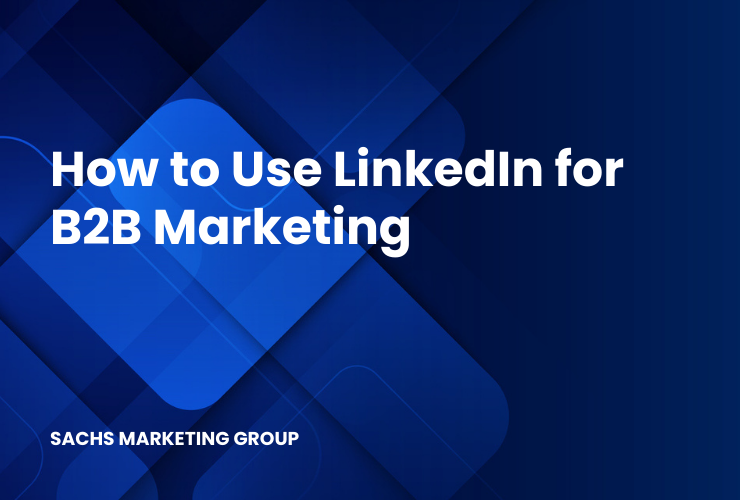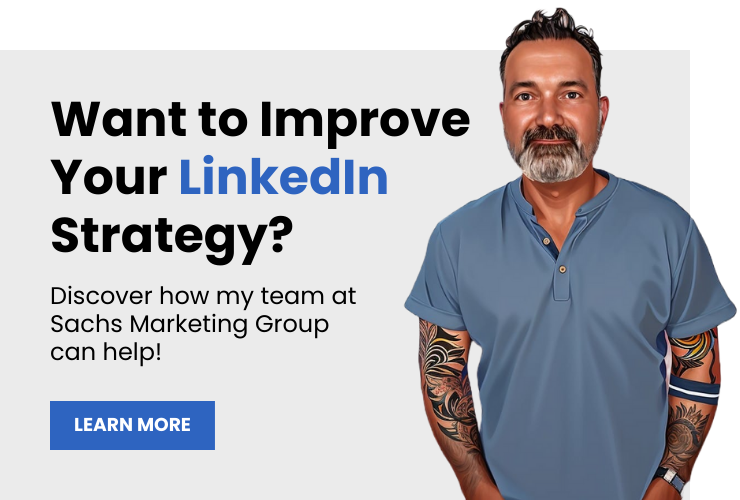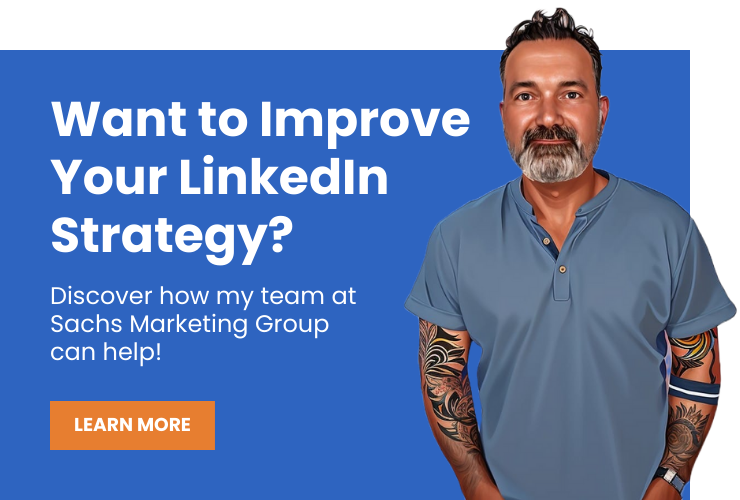LinkedIn is an indispensable tool for B2B marketers, offering a professional platform to connect with potential clients, strengthen brand recognition, and generate quality leads. The network’s focus on business and professionalism makes it an ideal channel for targeted B2B outreach.
The challenge of B2B marketing often lies in reaching the right audience with the right message.
LinkedIn provides a fertile ground for doing just that, being a hub where industry professionals and decision-makers gather to connect, learn, and grow their businesses. However, mastering LinkedIn’s full potential can be a bit overwhelming.
In this article, we’re exploring how to use LinkedIn for B2B marketing.
Overview
How to Use LinkedIn for B2B Marketing
LinkedIn isn’t just another social media platform – it’s a powerful B2B marketing tool when wielded correctly. While it may not be as popular among consumers as Facebook or Instagram, it offers a powerful way to reach specific groups of professionals.
While it may be tempting to focus on other platforms with your social media marketing, it’s important to consider your target audience. If you’re in the B2B space, you need to implement LinkedIn in order to supercharge your social media marketing strategy.
Here’s how to use LinkedIn for B2B marketing:
Define Your Brand’s Goals
Before you initiate any marketing activities on LinkedIn, it’s crucial to define your brand’s goals clearly.
Are you trying to increase brand awareness, generate qualified leads, establish thought leadership, or engage existing customers? Each goal requires a different approach and set of tactics to achieve.
For example, if your primary goal is to generate leads, you may want to focus on creating and sharing content that solves specific problems for your target audience and then offering even more valuable content behind a form. This kind of gated content encourages interested users to share their contact details in exchange for valuable insights, hence becoming warm leads.
Having well-defined goals can serve as a roadmap for your LinkedIn marketing strategy. It helps you to focus your efforts and allocate resources more effectively.
Goals also provide a framework for measuring your success. Specific and measurable goals allow you to track progress and make data-driven adjustments to your strategy. If, for instance, one of your goals is to increase website traffic from LinkedIn by 20% within the next quarter, you can easily monitor this through LinkedIn analytics and your website’s tracking tools, tweaking your strategy as needed.
Get to Know Your Audience
Understanding your audience is critical for any marketing initiative, and LinkedIn is no exception. The platform offers robust analytics that provides insights into the demographics of your followers and how they engage with your content.
You can gain valuable information on their job roles, industries, company sizes, and more. For instance, if you find that a majority of your engagement is coming from mid-level professionals in the healthcare industry, you can tailor your content to address their specific concerns and needs.
A comprehensive understanding of your audience will allow you to create more relevant and engaging content, contributing to higher engagement rates and more meaningful interactions.
This doesn’t mean you should ignore other segments of your audience but focus your efforts where they are most likely to make an impact.
If, for example, you realize that decision-makers from potential client companies frequently engage with thought-leadership articles, you might want to increase the frequency of such content.
This ensures that your LinkedIn strategy is not just throwing messages into the void but actively engaging with the right people in a way that contributes to your broader business goals.
Design A Company Page that Represents Your Brand
Your LinkedIn Company Page serves as the digital storefront for your business on the platform. Therefore, it should effectively represent your brand, mission, and values.
Ensure your profile picture, banner image, and company description are all in alignment with your brand identity. A well-designed page could be the first impression that many potential clients or partners have of your company.
For example, if you’re a B2B software company specializing in AI solutions, you might use AI-related imagery and include key phrases in your company description to emphasize your expertise in the field.
Moreover, the “About Us” section and featured content areas should articulate what your company does and why visitors should care. It’s not just about listing your products or services; it’s about framing them in a way that resonates with your target audience. Using videos, images, and other multimedia can also help break up the text and engage visitors more effectively. Always keep the content updated to reflect any changes in your business or industry trends.
Use SEO Research to Add Keywords to Your Company Page
SEO isn’t just for search engines like Google; it’s also essential for platforms like LinkedIn where users are actively searching for industry-relevant content, companies, or jobs. Conduct SEO keyword research to identify the terms that your target audience uses to search for products or services like yours.
For instance, if you offer cloud computing services, you may want to include keywords such as “cloud solutions,” “enterprise cloud services,” and “cloud security” in your company description and posts.
Once you’ve identified these key terms, integrate them naturally throughout your Company Page. This includes your ‘About’ section, job listings, and even the posts you share. By optimizing your LinkedIn Company Page for SEO, you improve its discoverability for users actively seeking your services or information relevant to your industry, increasing the chances of connecting with potential leads and partners.
Promote Your LinkedIn Company Page
Simply having a LinkedIn Company Page isn’t enough; you need to actively promote it to grow your audience and increase engagement.
Encourage your employees to engage with the content by liking, sharing, and commenting. Their networks can significantly extend the reach of your posts. For example, running an internal campaign where employees are encouraged to share a recent company accomplishment can dramatically increase visibility and garner more followers.
In addition to leveraging employee networks, you can also use LinkedIn ads to target a specific audience or cross-promote your LinkedIn page through other social media platforms and your email marketing campaigns. The objective is to create multiple touchpoints so that prospective clients and partners have every opportunity to discover and interact with your LinkedIn Company Page.
Create a Content Strategy Specifically for LinkedIn
When it comes to LinkedIn, a one-size-fits-all approach to content doesn’t work. The platform is primarily professional, meaning that the content should be tailored to this audience.
Utilize different types of content like articles, videos, and infographics to discuss industry trends, showcase your company culture, or share customer testimonials. For example, a monthly round-up of industry news and insights could provide value to your audience and position your brand as a thought leader.
Whether you’re juggling several platforms or focusing on LinkedIn alone, it’s a good idea to develop a content calendar for your social media strategy. This will help you stay organized and on top of what’s happening and what’s next. Check out our guide on How to Create a Social Media Content Calendar.
Your LinkedIn content strategy should align with your overall business goals and be designed to engage your specific LinkedIn audience. Regularly review your LinkedIn analytics to understand what’s working and what isn’t. This enables you to adjust your strategy accordingly, ensuring that you are continually providing value and meeting your objectives.
Join LinkedIn Groups and Participate
LinkedIn Groups provide a space for professionals in the same industry or with similar interests to share content, find answers, and establish themselves as thought leaders.
These are excellent networking opportunities and can also be a source of new leads.
For example, a cybersecurity firm could join groups related to IT and cybersecurity, share valuable insights, and engage in meaningful conversations to establish its credibility.
It’s not enough to just join groups; active participation is crucial. Post thoughtful comments on others’ posts, share interesting articles, and pose questions to the group to foster interaction. By being an active participant, you not only keep your finger on the pulse of your industry but also make valuable contacts and bring visibility to your own profile and company page.
Measure Results
Measuring your LinkedIn efforts is crucial for understanding ROI and adjusting your B2B marketing strategy as needed. LinkedIn provides a range of analytics for your Company Page and individual posts, including engagement rate, click-through rate, and follower demographics. For instance, if one of your posts garners a high level of engagement, consider creating more content around that topic or format.
Regularly reviewing these metrics can help you make data-driven decisions. It enables you to fine-tune your LinkedIn marketing strategy and focus on what genuinely drives results.
Whether it’s changing your posting schedule or tweaking your targeted ads, measuring outcomes will allow for ongoing improvement in your LinkedIn marketing endeavors.
Hire a LinkedIn Marketing Expert
Even with a solid strategy and continuous effort, LinkedIn marketing can be challenging to master due to its ever-changing algorithms and features. This is where hiring a LinkedIn marketing expert can make a significant difference.
These professionals can fine-tune your strategy, optimize your company page, and run targeted ad campaigns to ensure maximum ROI.
For example, an expert could set up a LinkedIn lead generation campaign to capture high-quality leads directly within the platform, saving you the effort and ensuring higher conversion rates.
An experienced LinkedIn marketing expert will not only keep up with the latest best practices but also help you avoid common pitfalls. They can also provide a new perspective on your strategy, bring in innovative ideas, and free up your time to focus on what you do best—running your business. Investing in professional expertise can make a significant difference in the effectiveness of your LinkedIn marketing efforts.
Partner with Sachs Marketing Group
Are you ready to take your LinkedIn B2B marketing to the next level? Sachs Marketing Group is here to help!
We specialize in creating result-oriented social media marketing strategies that deliver. With our comprehensive approach that covers everything from SEO to social media, you’ll not only meet but exceed your marketing goals.
Don’t just take our word for it – see the results for yourself and call us today.
Conclusion
LinkedIn is more than just a networking platform; it’s a dynamic arena for B2B marketers looking to forge meaningful connections, enhance brand recognition, and generate quality leads.
By following the strategies outlined in this article, you’re well on your way to mastering how to use LinkedIn for B2B marketing effectively. Whether you do it yourself or choose to hire an expert, the important thing is to be strategic, focused, and consistent in your efforts.
Contact us today to get the conversation started!













